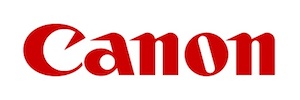Hello, this is Andy Tribute. I want to talk today about disruptive technologies because Disruptive Technologies are ones that change industries. Disruptive technologies happened within our industry many times. We’ve had the change in color workstations coming in, in 1979 with Sign Techs that largely changed the offset market and made color much easier. We had the major change that happened with desktop publishing that came in, in ’84 and ’85 and basically this in a sense killed the typesetting industry and created the design for print industry where we eliminated a large slice of the market where now designers created the work and it went straight to print. We had the same thing happen when we saw the digital print market starting. And again, this changed the way people considered printing where suddenly you could do short runs very economically and you could start doing one-to-one marketing with personalization.
So, we’ve had disruptive technologies for some time in this industry and we now have another disruptive technology. This is a technology that’s going to change the inkjet marketplace. Now, inkjet is well-established. We’ve got the continuous feed inkjet machines that everyone’s very excited about at the moment, but we’ve had wide format inkjet for years, and the whole signage business has changed. But we’ve now got a disruptive technology that’s going to seriously impact in this area.
This disruptive technology is the next, the latest inkjet technology coming from Memjet. Now, we’ve spoken about Memjet before, it’s basically a very impressive high speed, low cost ink jet print head. And recently Memjet have introduced office printers running at 60 pages per minute with a price of $600. Very impressive. But what we’re now going to see from them is how this is being scaled up and going into different market areas.
To show you what I mean, I want to show you some videos:
VIDEO
This is the Memjet wide format print engine shown here running a range of different applications.
The video you just seen is of the wide format print engine. This is an engine made up of five print heads stitched together across the width of the material. This has a 42-inch wide web and it runs at a speed of up to 12 inches per second. That’s right, 12 inches per second. That’s fast… seriously fast considering this is a product that sells for $6,000 with that region.
What I saw, and you saw that video is a range of different jobs. For example, this is being aimed at the folding carton market, the corrugated board market, the labels market and the architectural drawings market at this stage. And while you saw the video, many people do videos to show what can be done, but you don’t actually see the product. This I saw running, I had samples I took away. Example, corrugated board. As you can see from the back of it. Folding card stock. Same sort of product, but basically folding card stock. Labels on label sub straight.
Now these I know are not 42 inches wide, but they were when I saw them, but I had to cut them up in order to get them back here rather than getting them messed up.
Another product in the labels market, not the wide format, but a single engine wide is a desktop label printer. Now, as you see here, it’s label stock. Very cheap and ideal for companies in the web marketing business who are doing packaging, etc. with product changing all the time. Now, that’s very impressive when you see what’s happening in the wide format market. There are other things happening. Let me just show you output, and we’ll go to a video in a moment. This is continuous feed labels done on high speed.
I’ll show you the video which you’ll find pretty interesting.
[Video]
This is the Memjet production class print engine which can run at different speeds. Here is seen running at full speed and now it is running at the slower speed so you can check the quality of the output. This is made up of multiple print heads working inline.
This video you’ve just seen really excites me because what you are seeing here is instead of putting five print heads across, they’re putting five print heads in line to give them higher speed. This engine you are seeing here for the label market is running at a staggering 32 inches a second. That works out at 48 meters a minute. That is quick considering the cost of this engine and the quality is exceptionally good as well.
Now, let us think; what does that really mean for the future? So, you can stack heads across and you can stack heads deep. So you can increase the width and you can increase the speed. In the case of when they stack the heads in line, what they’re actually doing is using one head per color, so they’re using four channels to print the same color to get the increases speed.
Now, I think this is really exciting because what I think it’s likely to generate is not just a single width high speed machine or the slower, but still quite quick, wide format machine, but I can see we’re going to have a range of machines coming out for a wide range of markets.
For example, you put two print heads side-by-side together with the five in line and you’ve now got a 16 or 17 inch wide press; perfect for some of the flexo markets. Put three wide and now you’ve got a 25 inch wide press running at 48 meters a minute. That works out at approximately 500 A4 letter pages a minute. The same speed in terms of pages per minute as you get from a lot of the continuous feed high speed inkjet machines that sell for in excess of $1 million.
So suddenly we’re seeing something that’s going to change things. Now, I can project the sort of things you might see is, say a transactional printer or a book printer running at these sort of speeds at fundamentally cheaper prices than we have at the moment and with good quality. I could see on demand newspaper presses that would be able to do the same sort of thing that allow newspaper publishers have small presses in remote locations for doing newspapers where it’s difficult for delivery or for zoning, etc.
Various things. The possibilities are endless in terms of what you could do. Very high speed machines for doing printing corrugated board for the packaging industry or for the box industry, big signage things. Now there are limitations at the moment. This is dye-based only, but Memjet are working on pigmentings and need to change into silicone of the print head, but one could see that with pigment you get higher quality and that go into different market spaces. We could see possibly other forms of ink would do sub straights to take this into the outdoor market. All sorts of things. But what I see in this is I see that the Memjet technology, when you scale it, when you put it side-by-side print heads across and print heads deep, you suddenly change the market space
Now, what I think this key thing is, is this will reduce the prices in the marketplace to give us products that are much more entry level, that are more feasible for many people who can’t afford the current level of systems. So, is this a disruptive technology? Of course it is. It’s going to have a big impact. And what’s going to be interesting over the next year or so is to see who Memjet’s partners are to open up the market into new spaces that we haven’t considered before.
This is Andy Tribute. Thank you very much indeed.

 Official camera partner of WhatTheyThink and the drupa daily.
Official camera partner of WhatTheyThink and the drupa daily. 













Discussion
By frank shuman on Feb 09, 2011
Great insights into what the digital future may look like, makes the the imagination run...
By Clint Bolte on Feb 09, 2011
What do their patents suggest is the reason for this extraordinary advancement in speed?
Simply scaling the printheads as Andy describes certainly opens up different market/product applications, but does not really explain the speed enhancements that much.
Thanks!
By Gordon Pritchard on Feb 09, 2011
Love the ominous sound of thunder in the background punctuating some of Andy's comments.
Unfortunately Memjet has updated their website and as a result their old press releases and tech descriptions are no longer available. However, since the technology has been around for over 5 years, iIs it possible that Memjet technology is already being used in a few of the major vendor's digital presses but is being kept "under the hood?"
By Fadel Iskander on Feb 09, 2011
I doubt that the technology used in the Memjet is the same as one used in either the hp/PB T200/T300 or the Kodak Prosper.
The colors are vibrant whereas they are never vibrant in the super highspeed multi-million dollar production inkjet presses.
It is impressive. I'd like to get a little one of those for the house. Andy says they are going for about $600!!!!
Amazing indeed.
Disruptive for sure....
Proveded they can really integrate all of theses heads together and still produce output that can be trusted for transactional documents within the next 18-months).
By Andrew Tribute on Feb 09, 2011
Gordon and Fadel
I can assure you that none of the high-speed continuous feed print engines currently announced in the market use Memjet print heads. My belief is that Memjet has linked five print heads across the web and five print heads inline, but as yet have not combined the two. This is for Memjet's own developments, but I cannot comment on what might be under development from as yet unknown Memjet OEMs.
By Jan Eskildsen on Feb 10, 2011
The reason for changing the web site, which happened just a few days ago, and after the announcement of a Lenovo printer with Memjet techology, is a harbinger for a significant announcement.
Well, that's what I think... :-)
By Chuck Gehman on Feb 10, 2011
Very little actually disappears completely from the web.
If you want to look at their old website content, and the links to old press releases, etc., go to The Wayback Machine, at http://www.archive.org/web/web.php
Enter their web address, and voila, you will see several choices of their old web sites to view.
By Brian Lawler on Feb 10, 2011
I agree with Andy that Memjet is a truly disruptive technology. I have been a follower of Memjet for years, and now have a Memjet printer in my lab in testing.
This technology is absolutely amazing, and much like the HP Edgeline technology that came to market several years ago, it seeds the industry with the tools needed to put ink-jet heads almost anywhere in the printing process.
Keep an eye on this technology, as pretty soon it will be on a desktop or a wide-format printer (or a web press) near you.
By Thomas Schildgen on Feb 10, 2011
Andy Tribute is correct in classifying Memjet as a disruptive technology that will truly have an impact in many market sectors, and displacing other existing production processes. Further, we are seeing new technology being integrated at a faster rate than ever before. Memjet has an impressive record of registered patents during the past decade. One could only speculate on the industry partnerships that Memjet is capable of developing. Thomas Schildgen – Arizona State University
By Drew Court on Feb 15, 2011
I had the privilege of getting right up close to memjet technology here where their R&D headqauarters are in Sydney, Australia (Memjet uses Silverbrook Technologies' patented technologies). Apart from the monolithic MEMS printhead with over 73,000 nozzles, they developed their own chip to drive it and it is hugely powerful. Andy is right, create arrays, drive them with powerful front-ends of the kind we already see in HV Inkjet and you have a phenomenal potential for wider-web and up to maybe 150 metres/minute. Droplet size of less than 2pl! 1600x800dpi - Beat that? There is already a commercial label press using Memjet, also made in Australia. You can see it here:
http://www.youtube.com/watch?v=5pE2bbcZUI4